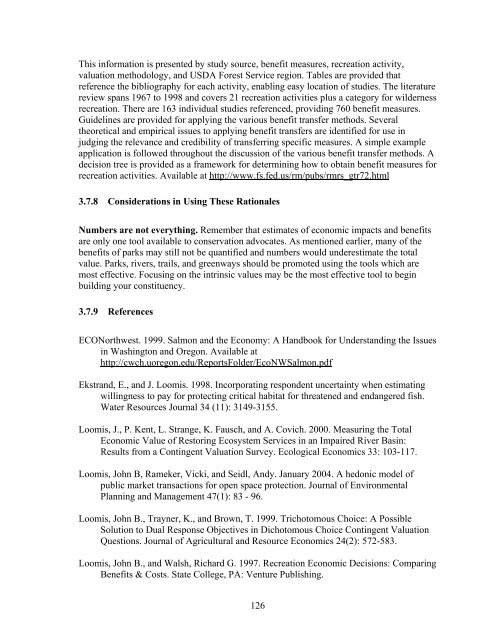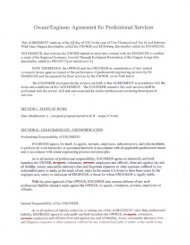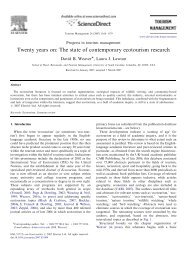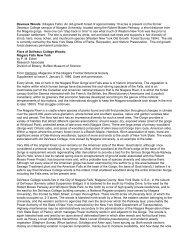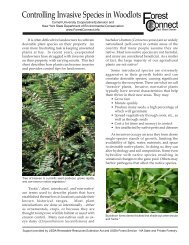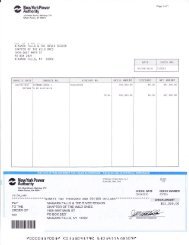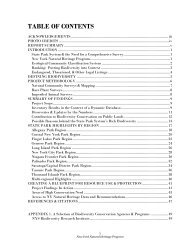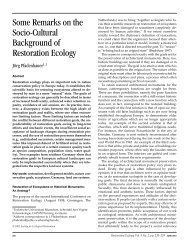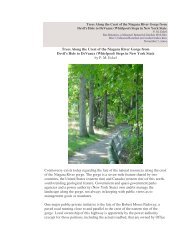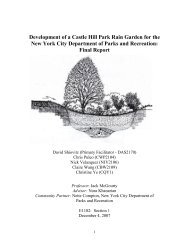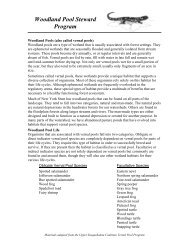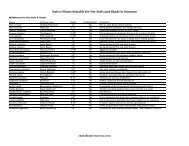Economic Impacts of Parks, Rivers, Trails and Greenways
Economic Impacts of Parks, Rivers, Trails and Greenways
Economic Impacts of Parks, Rivers, Trails and Greenways
Create successful ePaper yourself
Turn your PDF publications into a flip-book with our unique Google optimized e-Paper software.
This information is presented by study source, benefit measures, recreation activity,valuation methodology, <strong>and</strong> USDA Forest Service region. Tables are provided thatreference the bibliography for each activity, enabling easy location <strong>of</strong> studies. The literaturereview spans 1967 to 1998 <strong>and</strong> covers 21 recreation activities plus a category for wildernessrecreation. There are 163 individual studies referenced, providing 760 benefit measures.Guidelines are provided for applying the various benefit transfer methods. Severaltheoretical <strong>and</strong> empirical issues to applying benefit transfers are identified for use injudging the relevance <strong>and</strong> credibility <strong>of</strong> transferring specific measures. A simple exampleapplication is followed throughout the discussion <strong>of</strong> the various benefit transfer methods. Adecision tree is provided as a framework for determining how to obtain benefit measures forrecreation activities. Available at http://www.fs.fed.us/rm/pubs/rmrs_gtr72.html3.7.8 Considerations in Using These RationalesNumbers are not everything. Remember that estimates <strong>of</strong> economic impacts <strong>and</strong> benefitsare only one tool available to conservation advocates. As mentioned earlier, many <strong>of</strong> thebenefits <strong>of</strong> parks may still not be quantified <strong>and</strong> numbers would underestimate the totalvalue. <strong>Parks</strong>, rivers, trails, <strong>and</strong> greenways should be promoted using the tools which aremost effective. Focusing on the intrinsic values may be the most effective tool to beginbuilding your constituency.3.7.9 ReferencesECONorthwest. 1999. Salmon <strong>and</strong> the Economy: A H<strong>and</strong>book for Underst<strong>and</strong>ing the Issuesin Washington <strong>and</strong> Oregon. Available athttp://cwch.uoregon.edu/ReportsFolder/EcoNWSalmon.pdfEkstr<strong>and</strong>, E., <strong>and</strong> J. Loomis. 1998. Incorporating respondent uncertainty when estimatingwillingness to pay for protecting critical habitat for threatened <strong>and</strong> endangered fish.Water Resources Journal 34 (11): 3149-3155.Loomis, J., P. Kent, L. Strange, K. Fausch, <strong>and</strong> A. Covich. 2000. Measuring the Total<strong>Economic</strong> Value <strong>of</strong> Restoring Ecosystem Services in an Impaired River Basin:Results from a Contingent Valuation Survey. Ecological <strong>Economic</strong>s 33: 103-117.Loomis, John B, Rameker, Vicki, <strong>and</strong> Seidl, Andy. January 2004. A hedonic model <strong>of</strong>public market transactions for open space protection. Journal <strong>of</strong> EnvironmentalPlanning <strong>and</strong> Management 47(1): 83 - 96.Loomis, John B., Trayner, K., <strong>and</strong> Brown, T. 1999. Trichotomous Choice: A PossibleSolution to Dual Response Objectives in Dichotomous Choice Contingent ValuationQuestions. Journal <strong>of</strong> Agricultural <strong>and</strong> Resource <strong>Economic</strong>s 24(2): 572-583.Loomis, John B., <strong>and</strong> Walsh, Richard G. 1997. Recreation <strong>Economic</strong> Decisions: ComparingBenefits & Costs. State College, PA: Venture Publishing.126


